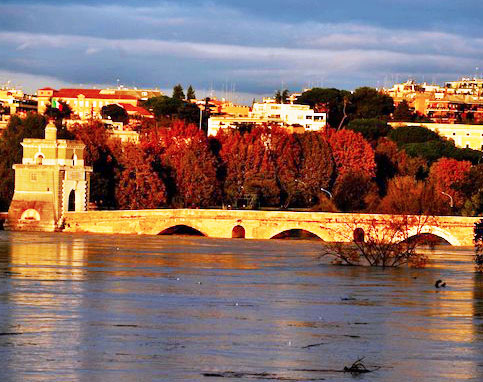Submitted by George Malanga
Before the unification of the country, our ancestors in Italy used all types of coins, depending on what region of the Italian peninsula they were in. The coin pictured is from the Papal States, the central part of Italy that was rules by the pope. The coin is a half baiocco and is made of copper. It was a very small denomination of currency and was used for everyday purchases. The coin was minted in 1750, a Holy Year for the Church, which occurred every 25 years. The pontiff seated on St. Peter’s Throne was Benedict XIV; Prosero Lambertini before being elected pope. The front of the coin depicts the Papal Coat of Arms, with the crown and keys of St. Peter at the top. On the reverse is the sealed Holy Door in St. Peters.
From at least the 12th century, coins of the Vatican were struck at the imperial mint of Rome, which was on the slope of the Campidoglio, not far from the Arch of Septimius Severus. In the 15th century, the location of the mint was shifted closer to the powerful the bank of Santo Spirito. Finally, in 1665, Alexander VII moved the minting equipment and its ancillaries to the rear of the apse of St. Peter’s and Bernini even invented a machine to strike the coins more rapidly. Everything associated with the minting of coins was owned by the Papal State, but the striking of the money was bid out to various engravers who took on the business risk of producing the coins at profit. They were responsible to the Apostolic Chamber of the Church for everything that they did.
With the unification of Italy and the altered status of Rome, the Italian government took over the operation of the Papal mint in September 1870. The mint was used to make Italian coins and due to the presence of Italian soldiers guarding the mint, a tunnel was constructed beneath the Apostolic Palace to ensure private access to the Vatican gardens.
Capitals of principalities subject to the Holy See also had mints. This was the case for Camerino (from Leo X to Paul III), Urbino, Pesaro and Gubbio (under Julius II, Leo X and Clement XI), Ferrara (from Clement VIII), as well as Parma and Piacenza (from Julius II to Paul III).
The Vatican still has its own currency, but rather than operating its own stamping presses, it has an agreement with the Italian State mint (Istituto Poligrafico e Zecca dello Stato) to mint its coinage up to a maximum of one million Euro per year.




